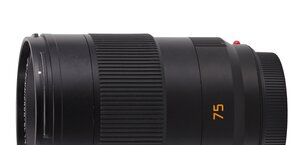Tokina AT-X DX AF 16.5-135 mm f/3.5-5.6
4. Image resolution

I must say it is one of the most uncharacteristic graphs I’ve dealt with so far. It’s the effect of three factors. Firstly the lens is exceptionally weak at the maximum relative aperture. Up to now we considered 30 lpmm as a decency level but it was used only in the tests conducted on 20D or 1Ds MkIII cameras. In the case of an EOS 50D the pixel density is greater and MTF values – higher. Reminding ourselves the results the Canon EF 100 mm f/2.8L Macro IS USM reached on the 20D and the 50D cameras we can easily notice that the MTFs obtained on the 50D are about 10% higher than these got on the 20D. We can assume that the decency level on the 50D begins near 33-35 lpmm. At the maximum relative aperture the Tokina 16.5-135 mm never reaches such values and at longer focal lengths its results are simply terrible.
Please Support UsIf you enjoy our reviews and articles, and you want us to continue our work please, support our website by donating through PayPal. The funds are going to be used for paying our editorial team, renting servers, and equipping our testing studio; only that way we will be able to continue providing you interesting content for free. |
- - - - - - - - - - - - - - - - - - - - - - - - - - - - - - - - - - - - - - - - - - - - - - - -
We can find some comfort in the second factor, though. On stopping down the Tokina improves its performance with lightning speed. For example on stopping down just slightly, from f/3.5 to f/4.0, at the shortest focal length makes the MTF jump by 15 lpmm! As the lens is not very useful when wide open, it can become very sharp on stopping down by just a tad.
The third factor is a strange performance from f/11 upwards. Lenses which have been stopped down so significantly are limited mainly by diffraction so the results are usually similar, no matter what we test. The Tokina still manages to fare a lot worse here than its competitors, though. Looking at the graph and the pictures, made during the test, it wasn’t so difficult to find out why. The pictures by f/11-32, taken in such a way that the light access to the sensor remains the same (so if we stop down by 1 EV we extend the exposure time by the same value), are a lot darker than those taken near the maximum aperture. There must be something wrong with the aperture work – it is more closed down than it might indicate its value. Because of that f/11 is in fact closer to f/16 than to real f/11.
All these problems limit the usefulness of the Tokina significantly. At the maximum aperture the image quality is weak because of aberrations; on stopping down the quality is hardly better - this time because of the diffraction caused, in turn, by the aperture clamping down more than it is indicated. As a result, the Tokina can be comfortably used in the range from 0.5 to about 2.5 EV from the maximum aperture.
Let’s see what the situation is at the frame edge.

By and large we could repeat everything we wrote above. The lens produces weak images when wide open and it improves very quickly on stopping down. We would recommend some caution when shooting at 135 mm. Even on stopping down to f/11 the frame edges remain blurry.
 |






